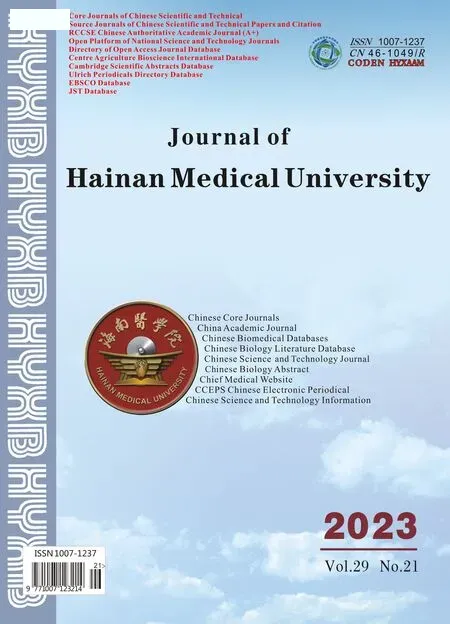Study on the mechanism of action of Lizhong Tang in ameliorating non-alcoholic fatty liver disease by regulating mitochondrial autophagy
SUN Dong-qi, ZHOU Xiao-ling, WU Teng, LI Ling-chang, LI Ze-peng, SUN Su-hong,WANG Yue-ming, LIU Lin, MO Yi-ling, YU Jing-fang
1.Liuzhou Hospital of Traditional Chinese Medicine, Liuzhou 545001, China
2.Graduate School of Guangxi University of Traditional Chinese Medicine, Nanning 530000, China
ARTICLE INFO
Article history:
Received 14 May 2023
Received in revised form 13 August 2023
Accepted 8 Oct 2023
Available online 14 Nov 2023
Keywords:
Mitochondrial autophagy
Non-alcoholic fatty liver disease Lizhong Tang
Mechanism of action
ABSTRACT
Objective:To investigate the therapeutic efficacy and underlying mechanisms of LiZhong Tang in the context of non-alcoholic fatty liver disease (NAFLD).Methods: High-fat feed was used to induce NAFLD in rats, Blood and liver samples were collected to facilitate a comparative analysis of rat body mass and liver wet weight and calculate the liver index.Liver pathology was observed, while serum transaminase and blood lipid levels were measured.The protein expression levels of PINK1, Parkin, and LC-3II in rat liver were detected using Western Blot analysis.Results: Compared with the control group, the NAFLD rats exhibited a significant increase in body weight, liver wet weight, liver index, transaminase levels,and blood lipid levels.The expression levels of PINK1, Parkin, and LC3-II protein were significantly decreased(P<0.01).Following intervention with Lizhong Tang, rats in each herbal treatment group displayed a decrease in body weight, liver wet weight, liver index,se- rum transaminase, and blood lipid levels.The expression levels of PINK1, Parkin, and LC-3II rebounded(P<0.05), with the high-dose group demonstrating the most pronounced effects(P<0.01).Histopathological examination of liver tissue revealed that rats in the model group displayed disrupted hepatic lobule structure, swollen hepatocytes, disordered arrangement, and a multi- tude of varying-sized lipid vacuoles within the cytoplasm.Conversely, rats treated with different doses of the herbal remedy exhibited improvements in liver tissue pathology, with the high-dose group showing the most notable enhancement.Conclusion:Lizhong Tang can improve NAFLD disease by regulating mitochondrial autophagy.
 Journal of Hainan Medical College2023年21期
Journal of Hainan Medical College2023年21期
- Journal of Hainan Medical College的其它文章
- Assessment of gastric cancer prognosis, immune infiltration based on cuproptosis-related LncRNAs and prediction of traditional Chinese medicine
- Mechanism of AiTongXiao granule in the treatment of hepatocellular carcinoma based on network pharmacology and rat transplanted liver cancer model
- The effect and mechanism of stilbene glycosides on improving neuronal injury in Alzheimer's disease rats by regulating ASK/MKK7/JNK pathway
- Meta-analysis of the acupoint application therapy for stable chronic obstructive pulmonary disease
- Preparation of adhesive resveratrol micelles and determination of drug content
- BMSCs transplantation inhibits neuronal apoptosis after subarachnoid hemorrhage in rats through activation of AMPK/mTOR signaling pathway-mediated autophagy
